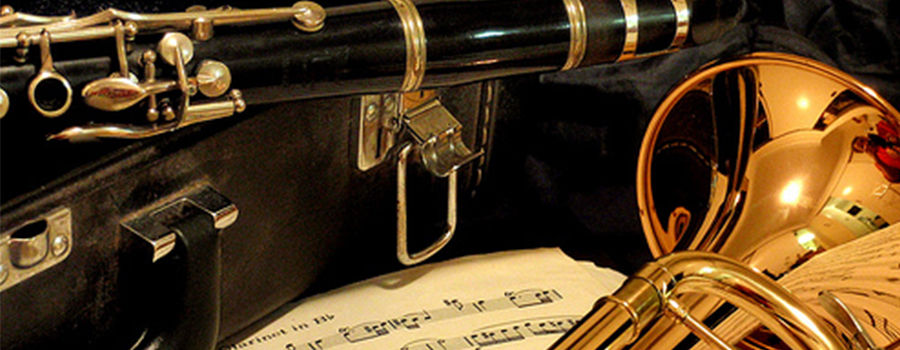Rachel Condry is clarinet faculty and the Chamber Music Coordinator and one of the chamber music coaches. Through her many years of teaching, she has developed a mindful practice routine that is useful for all music students, no matter the instrument.
From the series: Practice Tips from Community Music Center Faculty

Starting a Mindful Practice Routine
Usually the first question a student or their parent asks me about practice is “How long should I practice?” My answer is that you should practice for as long as you can hold your attention on the process of practicing. Most of us lead hectic lives moving from activity to activity (or device to device) and it can be a struggle to focus our attention on anything, especially the rather complex activity of practicing our instruments. A well-thought-out and mindful practice routine can improve your focus and attention during each practice session, improve your listening, help you make steady progress and discover deeper connections to your self, to music and the world around you.
A good practice routine is a set of simple and progressive exercises that move through all the elements of playing technique before music is played. My mindful practice routine includes performing a simple yoga pose at the start of your practice session and using your breath to help quiet your mind and connect to your body. It is the body that you will use to play your instrument so this is a critical and often overlooked step! Special attention should be made to “flow” from one exercise to the next, bringing the focus of the first activity into the second and both of those into the third etc. Over days and weeks and months this process will become routine and bring new perspective on your playing. You will become more efficient at moving through the routine and spend more time playing music while still improving your technique.
The first step of my practice process is performing Mountain Pose. It can be done by any body of any ability and can be performed seated or standing. The pose focuses on alignment (for standing version: knees over ankles, hips over knees, shoulders over hips etc) as well as grounding, feeling energy moving down from hips to feet and connecting the body to the earth. From this grounding, one can feel the strength of the lower body and from that strength, the upper body can rise and discover new freedom to breath and move. From this position take three big breaths, in through the nose as you raise your arms above your head and out through the mouth as you lower your arms back to your sides. If you need any energy because you are tired and scattered, imagine that you are gathering what you need from the air around you and bring it into your body through the breath. Imagine that this energy is installed on the exhale so you can take it with you. How do you feel? Ready to work? Noticing the length and strength of your body, move in to your first warm-up exercise and then on through the remaining steps of your practice routine. For example, my routine goes 1. Mountain Pose 2. Longtones 3. Articulation exercises at various speeds and in varying meters and rhythms. 4. Scales (including scales in all keys, scales in 3rd, running scales and arpeggios- played with a metronome at the same speed with attention to being in control.) 5. Etudes and musical studies. After I complete these steps, I am fully warmed up, very focused, and ready to play whatever music I need. All in all this practice routine takes up very little of my overall practice time but it is the foundation of everything that follows and so the most valuable part of my practice. Should I not have time for a full practice session, this is the minimum I do each day.
This practice routine is a type of listening that moves beyond our ears. It connects our mind and body to our practice and we NEED this kind of connection to maintain our focus. Listening internally and externally with body and mind grounds us and makes us feel heard. When we feel heard, we are refreshed and ready to work. Our practicing can take on new significance and become quite enjoyable. Over time it extends our listening out in time and helps us to acknowledge our progress, focusing our attention on how far we have come and giving us confidence about what more we can achieve. This mindful practice process has been a game changer and a true inspiration for me and my students. I hope that you might give it a try!



